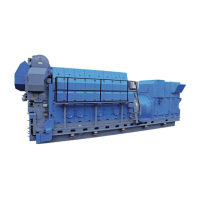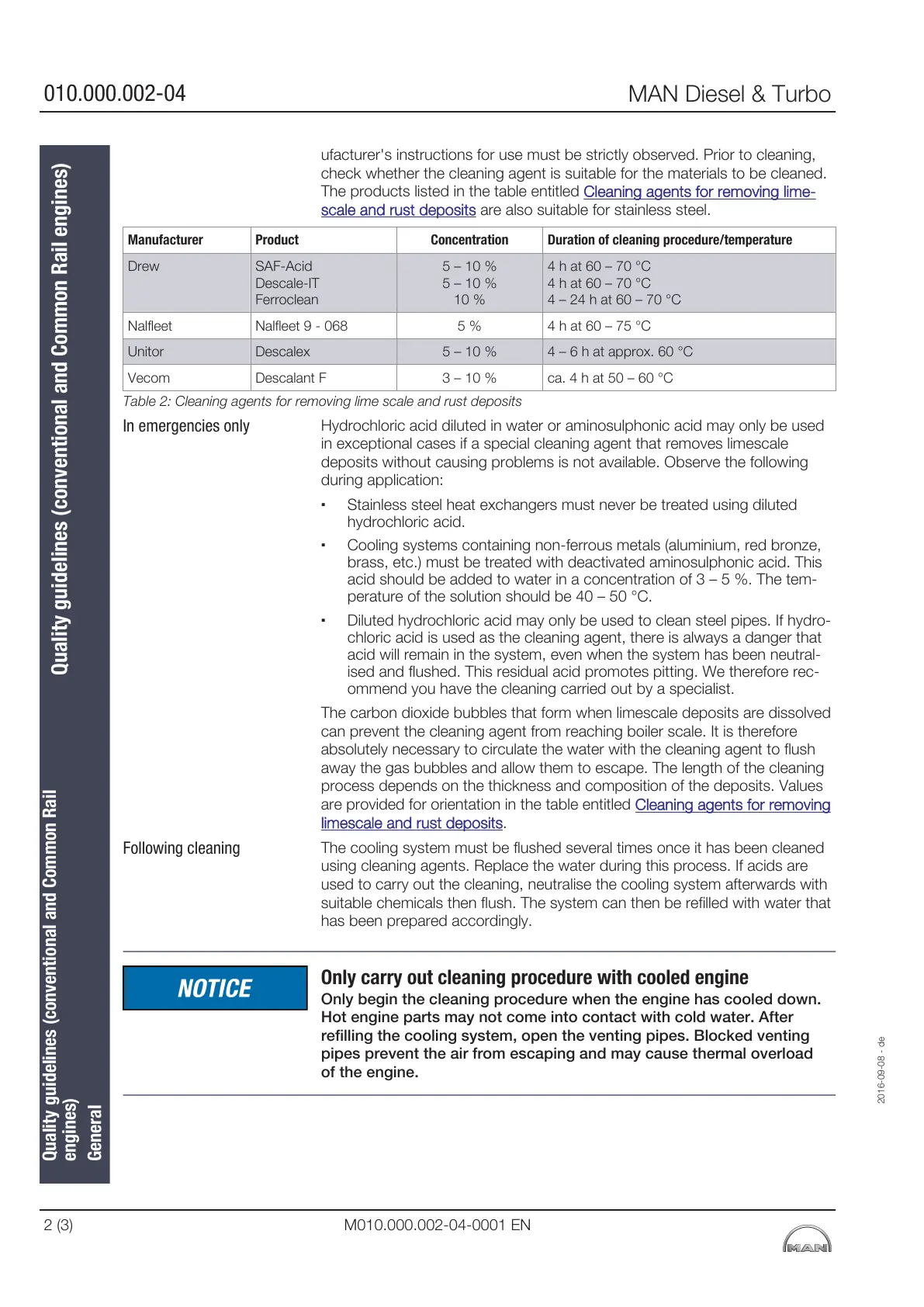ufacturer's instructions for use must be strictly observed. Prior to cleaning,
check whether the cleaning agent is suitable for the materials to be cleaned.
The products listed in the table entitled Cleaning agents for removing lime-
scale and rust deposits are also suitable for stainless steel.
Manufacturer Product Concentration Duration of cleaning procedure/temperature
Drew SAF-Acid
Descale-IT
Ferroclean
5 – 10 %
5 – 10 %
10 %
4 h at 60 – 70 °C
4 h at 60 – 70 °C
4 – 24 h at 60 – 70 °C
Nalfleet Nalfleet 9 - 068 5 % 4 h at 60 – 75 °C
Unitor Descalex 5 – 10 % 4 – 6 h at approx. 60 °C
Vecom Descalant F 3 – 10 % ca. 4 h at 50 – 60 °C
Table 2: Cleaning agents for removing lime scale and rust deposits
Hydrochloric acid diluted in water or aminosulphonic acid may only be used
in exceptional cases if a special cleaning agent that removes limescale
deposits without causing problems is not available. Observe the following
during application:
▪ Stainless steel heat exchangers must never be treated using diluted
hydrochloric acid.
▪ Cooling systems containing non-ferrous metals (aluminium, red bronze,
brass, etc.) must be treated with deactivated aminosulphonic acid. This
acid should be added to water in a concentration of 3 – 5 %. The tem-
perature of the solution should be 40 – 50 °C.
▪ Diluted hydrochloric acid may only be used to clean steel pipes. If hydro-
chloric acid is used as the cleaning agent, there is always a danger that
acid will remain in the system, even when the system has been neutral-
ised and flushed. This residual acid promotes pitting. We therefore rec-
ommend you have the cleaning carried out by a specialist.
The carbon dioxide bubbles that form when limescale deposits are dissolved
can prevent the cleaning agent from reaching boiler scale. It is therefore
absolutely necessary to circulate the water with the cleaning agent to flush
away the gas bubbles and allow them to escape. The length of the cleaning
process depends on the thickness and composition of the deposits. Values
are provided for orientation in the table entitled
Cleaning agents for removing
limescale and rust deposits.
The cooling system must be flushed several times once it has been cleaned
using cleaning agents. Replace the water during this process. If acids are
used to carry out the cleaning, neutralise the cooling system afterwards with
suitable chemicals then flush. The system can then be refilled with water that
has been prepared accordingly.
Only carry out cleaning procedure with cooled engine
Only begin the cleaning procedure when the engine has cooled down.
Hot engine parts may not come into contact with cold water. After
refilling the cooling system, open the venting pipes. Blocked venting
pipes prevent the air from escaping and may cause thermal overload
of the engine.
In emergencies only
Following cleaning
Quality guidelines (conventional and Common Rail
engines)
Quality guidelines (conventional and Common Rail engines)
General
2016-09-08 - de
010.000.002-04
MAN Diesel & Turbo
2 (3) M010.000.002-04-0001 EN

